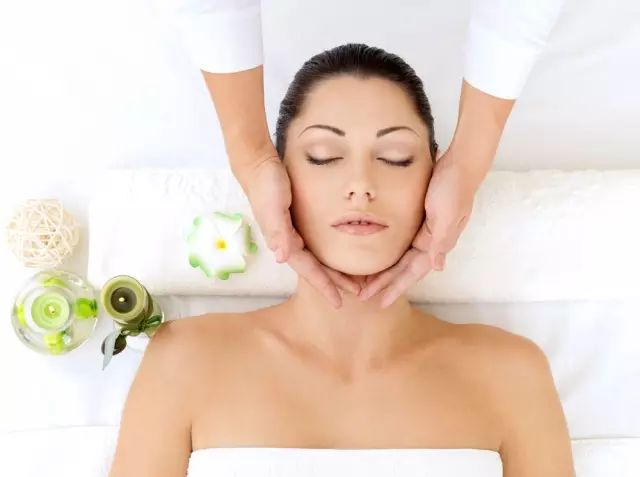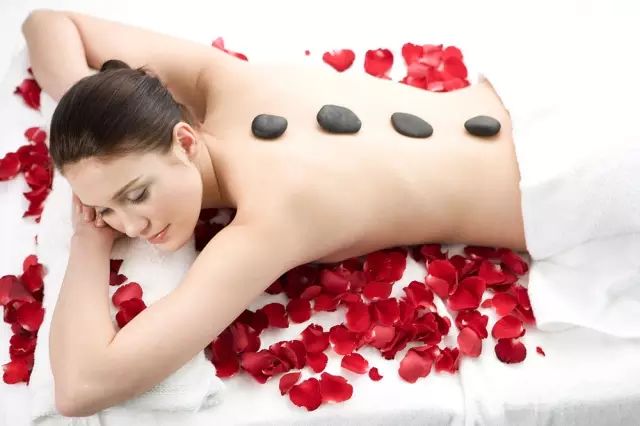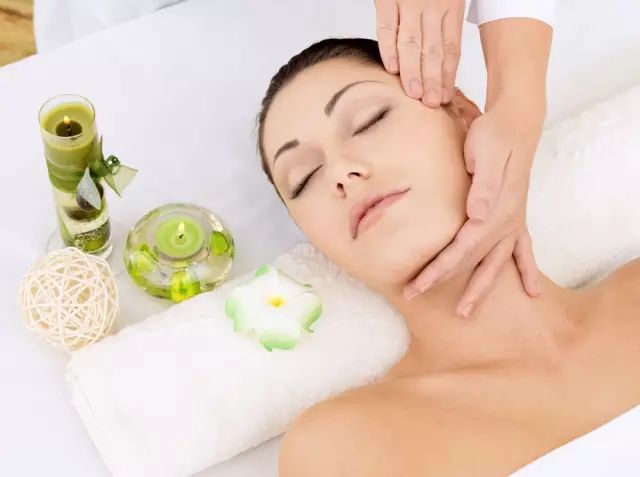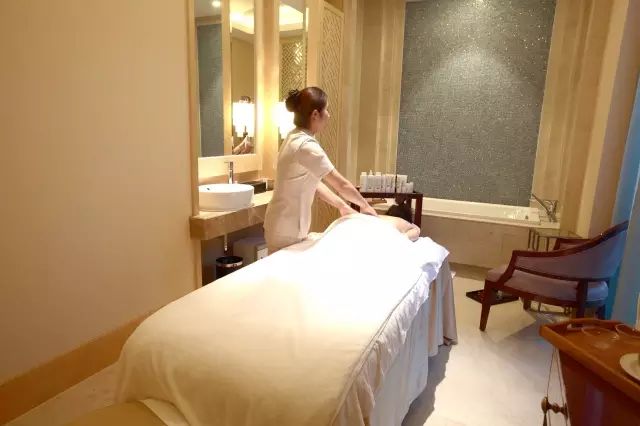
 It is said that for most people, tui na (推拿), massage (按摩), and spa (水疗) are all the same thing… For example, soaking in a rose bath or milk bath, followed by some shoulder kneading, leg squeezing, and back tapping, like this….
It is said that for most people, tui na (推拿), massage (按摩), and spa (水疗) are all the same thing… For example, soaking in a rose bath or milk bath, followed by some shoulder kneading, leg squeezing, and back tapping, like this….


 No no no! Back in the day, I was also confused about this. But today, I will clarify it for everyone!
No no no! Back in the day, I was also confused about this. But today, I will clarify it for everyone! (1) Tui Na vs. Massage These two indeed refer to the same thing. Tui na or massage has a long history, essentially originating from traditional Chinese medicine (TCM). During the Tang Dynasty, the Imperial Medical Bureau already established a massage department. The Qing Dynasty’s Yi Zong Jin Jian (《医宗金鉴》) also categorized trauma treatment techniques into eight methods: “mo, jie, duan, ti, tui, na, an, mo” (摸、接、端、提、推、拿、按、摩). This shows that in ancient China, tui na therapy was already a very mature field of TCM, but later, due to mixed usage of terms, names like “massage” and “tui na” gradually formed. In the TCM medical system, massage and tui na have their own complete theoretical framework. TCM treatment is generally divided into five levels: “skin, pulse, muscle, tendon, bone” (皮、脉、肌、筋、骨); massage and tui na mainly apply various techniques to specific areas on the body surface to restore or improve bodily functions. However, it should be noted that from the perspective of practice, modern massage and traditional TCM tui na have some differences. Traditional TCM tui na was used in ancient rural times to treat internal and external diseases, as well as bone injuries, while modern massage has a shorter history, fewer techniques, and mainly focuses on relaxing muscles and promoting qi and blood circulation to relieve fatigue and alleviate mental stress.
(1) Tui Na vs. Massage These two indeed refer to the same thing. Tui na or massage has a long history, essentially originating from traditional Chinese medicine (TCM). During the Tang Dynasty, the Imperial Medical Bureau already established a massage department. The Qing Dynasty’s Yi Zong Jin Jian (《医宗金鉴》) also categorized trauma treatment techniques into eight methods: “mo, jie, duan, ti, tui, na, an, mo” (摸、接、端、提、推、拿、按、摩). This shows that in ancient China, tui na therapy was already a very mature field of TCM, but later, due to mixed usage of terms, names like “massage” and “tui na” gradually formed. In the TCM medical system, massage and tui na have their own complete theoretical framework. TCM treatment is generally divided into five levels: “skin, pulse, muscle, tendon, bone” (皮、脉、肌、筋、骨); massage and tui na mainly apply various techniques to specific areas on the body surface to restore or improve bodily functions. However, it should be noted that from the perspective of practice, modern massage and traditional TCM tui na have some differences. Traditional TCM tui na was used in ancient rural times to treat internal and external diseases, as well as bone injuries, while modern massage has a shorter history, fewer techniques, and mainly focuses on relaxing muscles and promoting qi and blood circulation to relieve fatigue and alleviate mental stress. 
 For example, the “Mind and Body Purification Care Program” (全身淋巴排毒按摩) at the Bilang Bay Leisure Club includes what we commonly refer to as “massage”. This program uses British lymphatic drainage massage, applying regular and gentle techniques to envelop the body and perform massage, enhancing the flow of lymphatic fluid and bodily fluids, while also helping to alleviate water retention and feelings of heaviness in the body, resulting in a light and relaxed sensation. As for lymphatic detoxification, it employs basic techniques such as circulation, massage, rotation, and traction, supplemented with detoxifying essential oils, applying appropriate pressure to massage the lymph nodes, thereby accelerating lymphatic circulation and excretion, promoting metabolism, and providing nutrients to the skin, achieving the goal of detoxification and beautification. PS: In addition to “lymphatic drainage massage”, the “Mind and Body Purification Care Program” also includes “petal foot baths” and other components. Altogether, the entire program is what will be described as “SPA” below.
For example, the “Mind and Body Purification Care Program” (全身淋巴排毒按摩) at the Bilang Bay Leisure Club includes what we commonly refer to as “massage”. This program uses British lymphatic drainage massage, applying regular and gentle techniques to envelop the body and perform massage, enhancing the flow of lymphatic fluid and bodily fluids, while also helping to alleviate water retention and feelings of heaviness in the body, resulting in a light and relaxed sensation. As for lymphatic detoxification, it employs basic techniques such as circulation, massage, rotation, and traction, supplemented with detoxifying essential oils, applying appropriate pressure to massage the lymph nodes, thereby accelerating lymphatic circulation and excretion, promoting metabolism, and providing nutrients to the skin, achieving the goal of detoxification and beautification. PS: In addition to “lymphatic drainage massage”, the “Mind and Body Purification Care Program” also includes “petal foot baths” and other components. Altogether, the entire program is what will be described as “SPA” below.  (2) SPA The term SPA is derived from the Latin abbreviation “Solus Par Aqua“, meaning “health through water“. In Chinese, it is referred to as “水疗“. SPA refers to the use of water resources combined with bathing, massage, application of skincare products, and aromatherapy to promote metabolism, satisfying human visual, tactile, olfactory, auditory, and mental senses, achieving a state of physical and mental enjoyment. This leisure and beauty method originated in the 16th century in a small town in southern Belgium known for its natural hot springs called SPAU (史帕), originally referring to a spa therapy center. It became popular among European nobility in the 18th century as a preferred choice for leisure and health; in the late 20th century, the SPA craze resurfaced in Europe and America, and in the early 21st century, it spread to various Asian countries.
(2) SPA The term SPA is derived from the Latin abbreviation “Solus Par Aqua“, meaning “health through water“. In Chinese, it is referred to as “水疗“. SPA refers to the use of water resources combined with bathing, massage, application of skincare products, and aromatherapy to promote metabolism, satisfying human visual, tactile, olfactory, auditory, and mental senses, achieving a state of physical and mental enjoyment. This leisure and beauty method originated in the 16th century in a small town in southern Belgium known for its natural hot springs called SPAU (史帕), originally referring to a spa therapy center. It became popular among European nobility in the 18th century as a preferred choice for leisure and health; in the late 20th century, the SPA craze resurfaced in Europe and America, and in the early 21st century, it spread to various Asian countries.  SPA has generated many different types due to its combination with various leisure industries. Currently, the types recognized by ISPA (International SPA Association) include: 1. Destination SPA Destination SPAs primarily aim to improve guests’ lifestyles and health through various professional SPA services, including specially designed SPA programs, fitness, educational courses, accommodation services, and SPA dining. 2. Resort/Hotel SPA Resort or hotel SPAs are located within hotels or resorts, offering fitness, SPA dining, and various SPA services. 3. Day SPA Day SPAs are non-accommodation SPAs that provide daily professional SPA services, currently the most popular type of SPA in major metropolitan areas worldwide. 4. Medical SPA Medical SPAs are divided into clinic-style, personal services, and corporate medical units. 5. Mineral Spring SPA Mineral Spring SPAs are also very popular, providing natural mineral springs, either cold or hot, offering therapeutic SPA experiences. 6. Club SPA Club SPAs primarily focus on providing fitness services, offering various SPA services within a single day. 7. Cruise Ship SPA Cruise Ship SPAs are located on cruise ships, providing professional fitness, various SPA services, health, and SPA dining.
SPA has generated many different types due to its combination with various leisure industries. Currently, the types recognized by ISPA (International SPA Association) include: 1. Destination SPA Destination SPAs primarily aim to improve guests’ lifestyles and health through various professional SPA services, including specially designed SPA programs, fitness, educational courses, accommodation services, and SPA dining. 2. Resort/Hotel SPA Resort or hotel SPAs are located within hotels or resorts, offering fitness, SPA dining, and various SPA services. 3. Day SPA Day SPAs are non-accommodation SPAs that provide daily professional SPA services, currently the most popular type of SPA in major metropolitan areas worldwide. 4. Medical SPA Medical SPAs are divided into clinic-style, personal services, and corporate medical units. 5. Mineral Spring SPA Mineral Spring SPAs are also very popular, providing natural mineral springs, either cold or hot, offering therapeutic SPA experiences. 6. Club SPA Club SPAs primarily focus on providing fitness services, offering various SPA services within a single day. 7. Cruise Ship SPA Cruise Ship SPAs are located on cruise ships, providing professional fitness, various SPA services, health, and SPA dining. 
 Among the flagship projects at Bilang Bay Leisure Club, several belong to the “SPA” category, such as: Balance Energy Therapy (热石能量按摩护理), Deep Revitalization Therapy (东方经络), and the previously mentioned “Mind and Body Purification Care Program” (全身淋巴排毒按摩). I also invite fans to think about which of the seven types our SPA belongs to! (Feel free to reply in the background~)
Among the flagship projects at Bilang Bay Leisure Club, several belong to the “SPA” category, such as: Balance Energy Therapy (热石能量按摩护理), Deep Revitalization Therapy (东方经络), and the previously mentioned “Mind and Body Purification Care Program” (全身淋巴排毒按摩). I also invite fans to think about which of the seven types our SPA belongs to! (Feel free to reply in the background~)  (Bilang Bay spa scene, staff experience, photographed with their permission) During the program, you only need to let go of your worries, listen to soothing music, and feel the ultimate care for every inch of your skin in a spa room filled with a faint sandalwood scent… Reply “Mind and Body Therapy” to view related program items, and reply “SPA” to check other treatment price lists!
(Bilang Bay spa scene, staff experience, photographed with their permission) During the program, you only need to let go of your worries, listen to soothing music, and feel the ultimate care for every inch of your skin in a spa room filled with a faint sandalwood scent… Reply “Mind and Body Therapy” to view related program items, and reply “SPA” to check other treatment price lists! Related information compiled from the internet.
Related information compiled from the internet.

